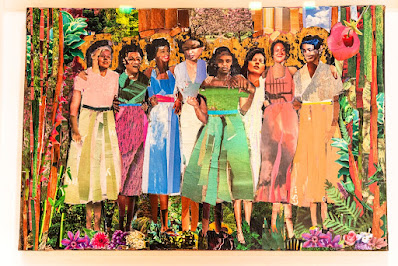* Manchester Museum’s new South Asia Gallery, a British Museum partnership, is the ?rst permanent gallery in the UK dedicated to the experiences and histories of South Asian diaspora communities.
Manchester Museum, part of the University of Manchester, reopens to the public on 18 February 2023 following a major capital redevelopment and this new multilingual gallery explores the connection between South Asia and Britain’s legacy of Empire, presenting fresh perspectives on British Asian and South Asian culture and creativity.
The gallery has been uniquely co-curated by the South Asia Gallery Collective, a group of 30 inspiring individuals including community leaders, educators, artists, historians, journalists and musicians. Showcasing over 140 historic artefacts from the collections of the Manchester Museum and British Museum, alongside new contemporary commissions and personal objects provided by the Collective, the gallery presents a range of personal stories that provide visitors with a window into South Asia. The gallery’s story-led design re?ects multiple voices and perspectives on South Asia through six overarching themes: Past & Present, Lived Environments, Science & Innovation,, Sound, Music & Dance, British Asian, and Movement & Empire.
In Past & Present, the public can explore the ancient Indus Valley Civilisation through a contemporary lens, which shares perspectives beyond archaeologists' perceptions of that time. It also presents powerful female ?gures of the Mughal Empire such as Nur Jahan, to re?ect on the role of women and reveal the impact of Gandhi’s visit to the cotton mill town of Darwen, Lancashire in 1931; exploring the connection of Manchester’s cotton industry to the Indian independence movement.
Lived Environments illustrates the importance of care within South Asian life, and the impact of the British Empire on the region’s environments. Items on display include postcards of tea plantations, tea tokens from the 18th century, an opium pipe and a ?lm showing the Bangladeshi environmental resistance through ?oating gardens.
Science & Innovation looks at South Asian innovation through the contribution of three iconic individuals that have often been overlooked, including Satyendra Nath Bose, one of the seminal founders of modern quantum science. Collective member, Fal Sarker, grandson of Bose will share the story of his impact on the scienti?c professions, including correspondence between Bose and Einstein as “a labour of love to my famous ancestry and his impact on quantum physics”.
Another anthology, Sound, Music & Dance, features various forms of musical expression from ancient instruments such as the hakgediya, a Sri-Lankan conch shell, to the secret South Asian Daytimers raves of the 80s and 90s. Work by Aziz Ibrahim features as part of a listening station - a musician in the Collective, recognised for playing with the Stone Roses and Simply Red, as well as developing South Asian blues which mixes English and Punjabi, whose album describes a family journey from Lahore to Manchester.
British Asian explores identity through a range of expressions from pop music to art, and celebrating stories not usually represented by mainstream British Asian culture including women and queer communities. A powerful contemporary painting by female painter Azraa Motala, explores what it means to be British Asian today, whilst Taslima Ahmad, a Collective member, discusses garment manufacture and South Asian working lives in Manchester.
Finally, Movement & Empire looks at South Asian identity in relation to voluntary and involuntary migration, including the impact of war and the trauma of Partition, which was one of the largest migrations in human history. An NHS display celebrates the importance of the South Asian community to UK medicine, from the 1950s movement of medics to the UK as well as the signi?cant contribution of the community during the Covid pandemic.
New commissions also populate the space, celebrating contemporary South Asian creativity and innovation, including a rickshaw imported from Bangladesh and decorated by communities in Manchester and a 17-metre-long newly commissioned mural from British artists, The Singh Twins, illustrating an emotional map of South Asian diaspora experience.
A dedicated space at the centre of the gallery will be shaped by ideas and contributions from the Collective and events will be programmed in collaboration with both local and international artists and performers.
Nusrat Ahmed, South Asia Gallery Curator at Manchester Museum, says: “As a ?rst-generation British-born South Asian person, it is really exciting to be part of such a groundbreaking project. The co-curated South Asia Gallery envisages a collaborative, iterative space that will generate new perspectives and connections. We hope to engage further diaspora communities on its opening and support its continual evolution. This personalised approach humanises the gallery, telling stories about real people and their objects.”
Hartwig Fischer, Director of The British Museum says, “The British Museum is delighted to be collaborating with Manchester Museum on the new permanent South Asia Gallery, a British Museum Partnership. We have learnt, and will continue to learn, a great deal from the communities and colleagues in Manchester on this innovative project. Creating partnership gallery spaces like these is a vital part of our national programmes work to share our collections with audiences across the UK.”

No comments:
Post a Comment
Thanks for posting your comments. Do continue to visit
http://blogspot.siliconvillage.net for more news, features and interviews in business, technology, gadgets related areas.